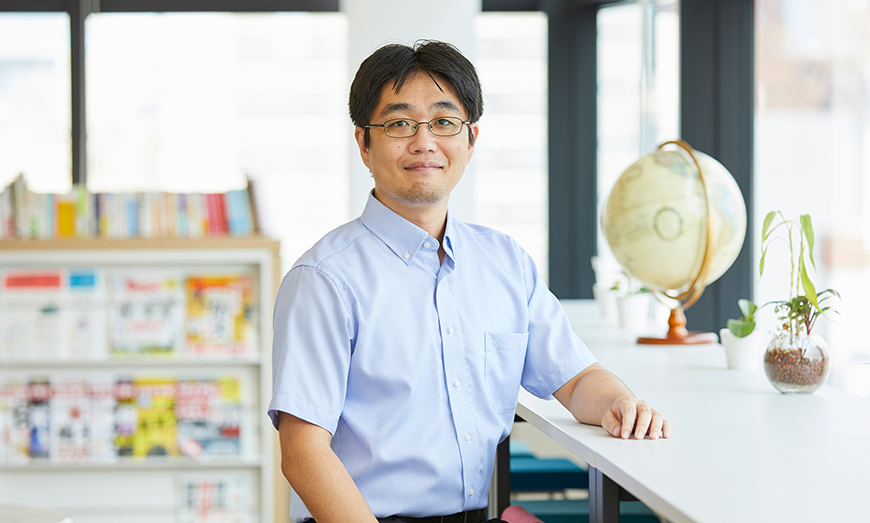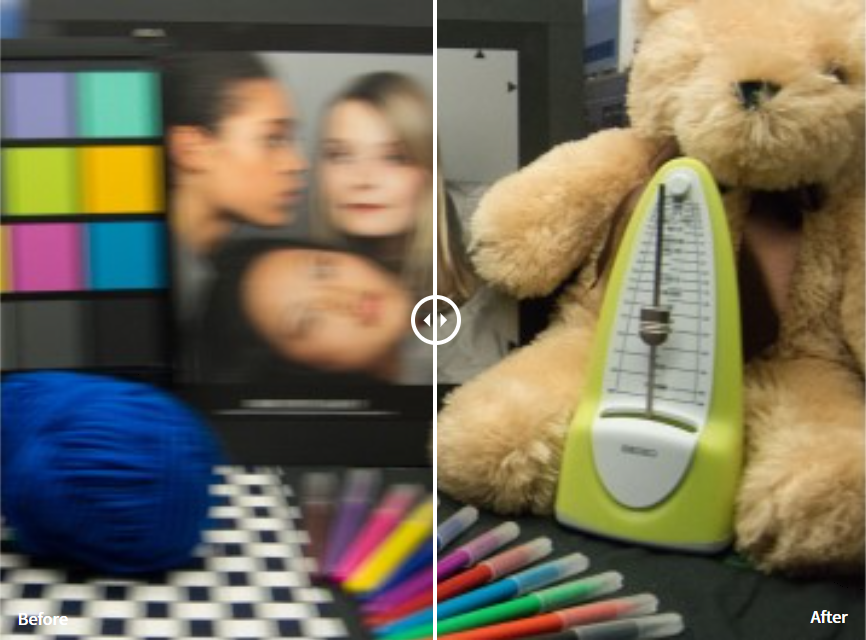Company
IR
Image Stabilization “PhotoSolid®”

“PhotoSolid”, image stabilization technology, has been a major product since Morpho's founding, and is currently offered with smartphones as the primary target area.
The person in charge of the development of “PhotoSolid” talked about its development and product features, as well as the possibilities of imaging AI in a wide range of areas.

The value in PhotoSolid is that it provides sharp images without camera shake or noise. Those who have a single-lens reflex camera may know well that camera shake and noise are the counterparts related with image degradation. Cameras, not limited to those of mobile phones, are devices that measure the amount of incident light. In other words, the more light enters a camera, the brighter the image is, and vise versa. When taking photos in a dark scene such as a night scene, noise turns up more than incoming light, which results in noisy images.
There are three options to increase the amount of incident light: (1) use a camera sensor of large size, (2) use a high grade lens, and (3) slow down the shutter speed during shooting. Options (1) and (2), however, cannot be applied after choosing a camera because we cannot change its hardware specification. Especially sensors and lenses of mobile phones are limited in their sizes and quality compared with digital cameras, so photos taken by mobile phones back in the days were not comparable in quality to those taken by digital cameras. On the other hand, option (3) increases the amount of light that enters the sensor when shooting to obtain brighter images with less noise using provided hardware. Unfortunately, slowing down the shutter speed makes entire images blurry by camera motion during shooting, i.e., hand jitter, so simply decreasing the shutter speed was not a solution.
PhotoSolid has improved image quality to overcome this conflicting phenomena as follows: given multiple images taken with high shutter speed and less hand jitter, it combines the images together to reduce noise. Noise in images can be reduced by averaging multiple images taken by burst shooting. This, in a nutshell, is all that PhotoSolid does, but there are some problems in practical use. For example, not only a camera can move slightly during burst shots, but also target objects in a scene are not always steady. If out-of-position images are combined, it causes multiple ghosting side effects. To avoid this degradation in image quality, we have developed the algorithm that selects only the area to be combined to reduce noise effectively while removing ghosting. This is the source of product strength of PhotoSolid.
More than a decade has passed since smartphones appeared in the world, but they are still in evolution as well as image processing technology. For example, we have improved image quality for images processed somewhat by the hardware. However, it becomes crucial to improve the quality of images just after they are output from the sensor, which is the very beginning of the image pipeline. For this reason, we are strengthening the relationship with chipset vendors to develop even more advanced image processing technology through the technical collaboration.
Also, it is most important to apply AI technology currently used for various applications into image processing. Human visual characteristics and preference are not necessarily consistent with optical characteristics and can be influenced by some semantic information. AI combined with image processing is expected to improve image quality because analyzing such semantic information is one of the strengths of AI. Morpho has been developing this combined technology for a while now.
Image processing technology for mobile devices is rapidly advancing. Nowadays, more and more people are taking photos with their smartphones instead of carrying around a digital camera, not only in their daily lives, but also for trips and other events. We will continue to contribute to the advancement of image processing technology. Our goal is to realize an impressive world where everyone can easily capture beautiful moments matching what we feel, and produce even more beautiful images than what we see.

PhotoSolid®
Image Stabilization
PhotoSolid is a software for electronic camera shake correction for still images and noise removal by combining multiple images using Morpho’s proprietary synthesis technology, based on the motion detection technology “SOFTGYRO®“.